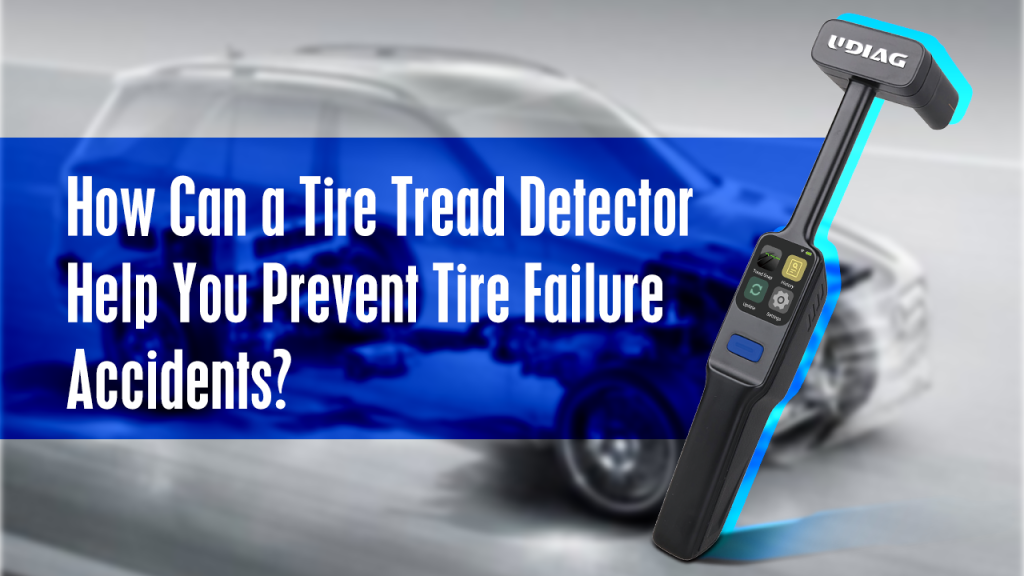How Does the Tire Tread Detector Help You Prevent Accidents?
2025-05-28 by UDIAG
Introduction:
When it comes to vehicle safety, tires are often overlooked—yet they are the only point of contact between the vehicle and the road. Worn or damaged tires are one of the most common causes of road accidents, especially in wet or slippery conditions. Unfortunately, many drivers and even professional technicians fail to regularly inspect tire tread depth. That’s where the tire tread detector becomes an essential tool in accident prevention.
What Is Tire Tread and Why Is It Important?
Tire tread refers to the patterned grooves on a tire’s surface. These grooves are designed to provide grip, channel water away, and maintain traction on different road conditions. As the tread wears down over time, the tire’s ability to maintain contact with the road surface diminishes – especially in wet weather. This increases the risk of hydroplaning, reduced braking efficiency, and overall poor vehicle handling.
Many countries and regions enforce minimum legal tread depth standards, typically set at 1.6 mm (2/32 inch), to ensure safe driving. That said, relying on a tire to reach this threshold before taking action might already compromise safety.
The Risks of Driving with Worn-Out Tread
Driving with insufficient tread depth can significantly compromise safety. The major risks include:
- Increased stopping distance: Worn tires require more time and distance to come to a complete stop.
- Hydroplaning: With shallow grooves, tires fail to effectively channel water away, leading to loss of control.
- Tire blowouts: Excessively worn tires are more prone to heat buildup and sudden failure.
- Poor handling: Especially during cornering or emergency maneuvers.
According to global traffic safety studies, a significant percentage of tire-related accidents are directly linked to inadequate tread depth.
Why Manual Tread Checks Aren’t Enough
Many drivers still rely on outdated methods like the “penny test” or visual inspection. These approaches are:
- Inaccurate: They depend on human judgment, which is inconsistent.
- Time-consuming: Especially when checking a fleet of vehicles.
- Not scalable: Manual checks are impractical for large repair shops or transport companies.
In today’s automotive aftermarket, a more reliable and efficient solution is needed – the tire tread depth detector.
What Is a Tire Tread Scanner?
A tire tread scanner is a specialized tool used to quickly and accurately measure the remaining tread on a tire. These devices come in various forms, including:
- Digital tire tread depth tester: Compact, portable, and easy to use.
- Laser-based tire tread scanners: High-precision tools often used in advanced service centers.
- Handheld or wireless smart devices: Suitable for quick mobile inspections.
By providing precise readings within seconds, these detectors eliminate guesswork and ensure consistent, professional results.
How Does It Help Prevent Accidents?
By regularly using a tire tread scanner, automotive professionals and fleet operators can:
- Identify unsafe tires before they cause accidents
- Schedule proactive tire replacements or rotations
- Maintain compliance with safety standards
- Avoid costly roadside breakdowns or liability from tire-related incidents
- Build a preventive maintenance routine that improves overall vehicle uptime
The TT100 tire tread detector tool is especially valuable in commercial environments where safety, efficiency, and operational reliability are critical.
Conclusion
Worn tires are a hidden danger that can lead to catastrophic results. Investing in a tire tread depth detector is a small step that delivers big safety returns. It allows service professionals and fleet managers to make informed decisions, protect lives, and reduce liability.
Don’t let tire wear go unnoticed. Equip your workshop with the reliable tire tread detector from UDIAG today.



